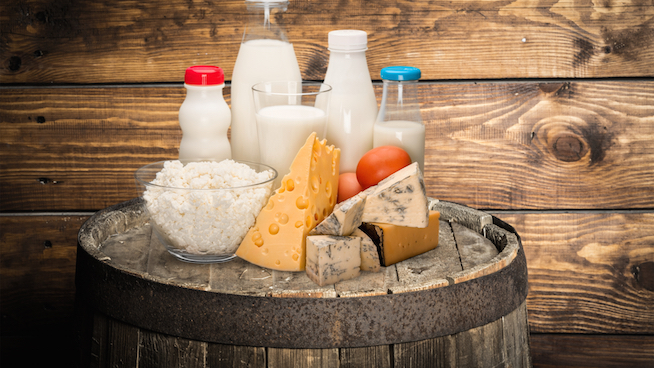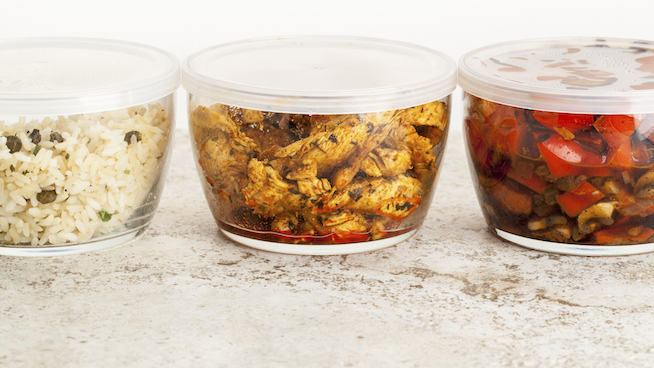The Los Angeles Lakers PRO Nutrition Plan

Photo: AP
Steve Nash took to it quickly. Kobe Bryant said he never felt better. And Dwight Howard used it to turn his season around (even if he eventually headed to Houston). If the Los Angeles Lakers surprise us and make a run at the playoffs this year, the team’s most critical assist might come from its nutrition plan—a program you can use to eat better, feel stronger, and recover faster.
In 2012, Lakers trainer Gary Vitti asked nutritional consultant Dr. Cate Shanahan to create new diet guidelines for the team. The Lakers call the plan PRO Nutrition, with PRO standing for Performance, Recovery and Orthogenesis.
You’re familiar with the first two terms, but that last one—orthogenesis—might be new to you. It’s a Greek word that means “correct beginning,” and it refers to the diet’s attempt to mimic the way our ancestors ate.
In the PRO diet, processed foods or added sugars (like high fructose corn syrup), trans fats, hydrogenated oils and giant servings of starches are out. Instead, they’re replaced by foods that generally fall into four categories:
- Fresh foods such as organic vegetables
- Fermented foods like sauerkraut and sprouted grains like Ezekiel Bread
- Meat on the bone (think rotisserie chicken instead of boneless chicken breast)
- Organ meats like liver or liverwurst
Lakers guard Jodie Meeks said the diet helped him eat less but feel full longer. “You feel stronger,” Meeks said, and his on-court performance last year confirmed his feelings. Meeks’s points and rebounds per game improved as the season wore on.
Today, when Meeks goes to restaurants, he even asks about cooking oils, because PRO Nutrition advises against canola, corn, soy, cottonseed, sunflower, safflower and other oils that can contain damaging chemicals.
The key to adapting to the PRO diet, Vitti said, is increments. For example, grass-fed beef tastes different from corn-fed, so it takes some getting used to. Shanahan says the body responds poorly to rapid dietary changes, but preferences adjust over time.
Vitti believes more people eventually will move to a PRO-style diet—athletes are just getting there first. “The research is there,” he said. “The science is there. We’re just way ahead of the market.”
Make Dinnertime Showtime
Here are five foods Dr. Shanahan recommends for athletes. Each is from one of the four pillars of PRO Nutrition. For more information, check out Shanahan’s book, Food Rules: A Doctor’s Guide to Healthy Eating.
Rotisserie Chicken: Chicken should still be on the bone, and ideally it should come from birds that grazed in a field, not in a pen. Pasture animals are preferred.
Liverwurst: It sounds nasty, but this organ meat is loaded with protein, iron and vitamins A and B12.
Salmon: The labels on salmon, tuna and other fish should indicate whether the fish was raised on a farm or caught in the wild. Always opt for wild.
Sauerkraut: A food from the “fermented and sprouted”category. It is actually cabbage that has been soaked in brine.
Salads: PRO Nutrition allows for five or six servings of vegetables per day. For each serving of fruit you eat, have three servings of veggies.
Photo: commons.wikimedia.com
RECOMMENDED FOR YOU
MOST POPULAR
The Los Angeles Lakers PRO Nutrition Plan

Photo: AP
Steve Nash took to it quickly. Kobe Bryant said he never felt better. And Dwight Howard used it to turn his season around (even if he eventually headed to Houston). If the Los Angeles Lakers surprise us and make a run at the playoffs this year, the team’s most critical assist might come from its nutrition plan—a program you can use to eat better, feel stronger, and recover faster.
In 2012, Lakers trainer Gary Vitti asked nutritional consultant Dr. Cate Shanahan to create new diet guidelines for the team. The Lakers call the plan PRO Nutrition, with PRO standing for Performance, Recovery and Orthogenesis.
You’re familiar with the first two terms, but that last one—orthogenesis—might be new to you. It’s a Greek word that means “correct beginning,” and it refers to the diet’s attempt to mimic the way our ancestors ate.
In the PRO diet, processed foods or added sugars (like high fructose corn syrup), trans fats, hydrogenated oils and giant servings of starches are out. Instead, they’re replaced by foods that generally fall into four categories:
- Fresh foods such as organic vegetables
- Fermented foods like sauerkraut and sprouted grains like Ezekiel Bread
- Meat on the bone (think rotisserie chicken instead of boneless chicken breast)
- Organ meats like liver or liverwurst
Lakers guard Jodie Meeks said the diet helped him eat less but feel full longer. “You feel stronger,” Meeks said, and his on-court performance last year confirmed his feelings. Meeks’s points and rebounds per game improved as the season wore on.
Today, when Meeks goes to restaurants, he even asks about cooking oils, because PRO Nutrition advises against canola, corn, soy, cottonseed, sunflower, safflower and other oils that can contain damaging chemicals.
The key to adapting to the PRO diet, Vitti said, is increments. For example, grass-fed beef tastes different from corn-fed, so it takes some getting used to. Shanahan says the body responds poorly to rapid dietary changes, but preferences adjust over time.
Vitti believes more people eventually will move to a PRO-style diet—athletes are just getting there first. “The research is there,” he said. “The science is there. We’re just way ahead of the market.”
Make Dinnertime Showtime
Here are five foods Dr. Shanahan recommends for athletes. Each is from one of the four pillars of PRO Nutrition. For more information, check out Shanahan’s book, Food Rules: A Doctor’s Guide to Healthy Eating.
Rotisserie Chicken: Chicken should still be on the bone, and ideally it should come from birds that grazed in a field, not in a pen. Pasture animals are preferred.
Liverwurst: It sounds nasty, but this organ meat is loaded with protein, iron and vitamins A and B12.
Salmon: The labels on salmon, tuna and other fish should indicate whether the fish was raised on a farm or caught in the wild. Always opt for wild.
Sauerkraut: A food from the “fermented and sprouted”category. It is actually cabbage that has been soaked in brine.
Salads: PRO Nutrition allows for five or six servings of vegetables per day. For each serving of fruit you eat, have three servings of veggies.
Photo: commons.wikimedia.com











